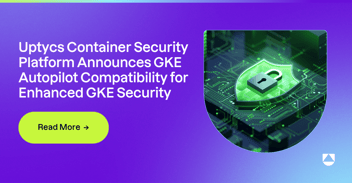Thinking Strategically About Containers in 2023
The future of containers and Kubernetes in 2023 and beyond is extremely bright. The cloud native landscape increasingly relies on containers to build, deploy, and run production-ready workloads. Security teams need solutions that enable, rather than hinder, these full lifecycles. The number of k8s project adopters continues to grow each year, with the cloud native community committing considerable resources to container-enabling technology innovation.
From policy enforcement to networking to kernel modules, the container space presents a wide range of opportunities going forward. In 2023, we’ll see deeply impactful innovation across the various layers of the cloud native stack. These improvements aren’t all technical in nature; surmounting legislative barriers are also top of mind for security leaders navigating a world where policy and protection don’t always align.
Andrew Martin, founder and CEO of the open source cybersecurity consultancy ControlPlane, recently published his own k8s security predictions for this year. They range from innovation at the kernel level to troubles at the political level—covering the holistic nature of modern security. His article covers the breadth of obstacles and exciting innovations we in the cloud native community expect to emerge over the next year. We discuss the future of containers and Kubernetes security with Andrew in this LinkedIn Live Cybersecurity StandUp session:
In thinking deeply about the future of containers and Kubernetes security, Uptycs has researched each of Martin’s predictions. We’ve provided a path forward for overcoming the obstacles he presents, incorporating exciting technological bits into real-world applications (e.g., using eBPF for deeper security event context).
Architecting Solutions: 14 Forecasts Worth Evaluating
Read the white paper that breaks down these coming trends in 2023.
- Addressing the growing backlog of CVEs and rising vulnerabilities in the container supply chain
- Simplifying RBAC complexity and visibility across Kubernetes and container deployments
- Increasing adoption of zero trust, and how to deploy it at scale for hundreds of thousands of endpoints
- Leverage anomaly detections to scale your threat detections and catch what traditional detections miss
- Implement eBPF at scale for better performance and security observability
- Manage up for CISOs and board members, with easy security reporting
- Amplify your team’s impact with automated remediation and blocking techniques that stop known attacks
- Correlate threat feeds and exploitation data sets to obtain context regarding which CVEs demand priority
- Monitor unique modules in the Linux kernel for resource utilization and malware
- Manage supply chain security and software dependencies with software bill of materials (SBOM) delivery
- Catch malware and ransomware before it proliferates across your environment
and shuts down critical infrastructure - Work toward golden images in your container registry by slimming down attack vectors and fixing CVEs before runtime
- Go beyond compliance standards and fine-tune your policies to your environment, as the rate of legislation for legal standards is not enough for real-world application
- Ensure no sensitive data leaves your environment by using agentless security scanning that guarantees only metadata results leave your environment







